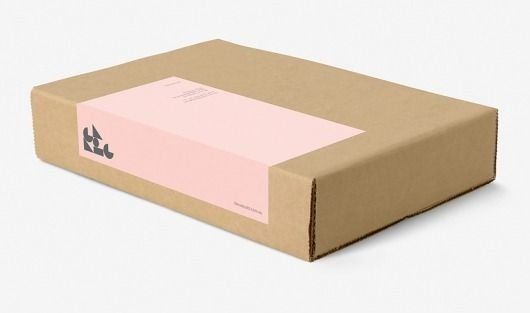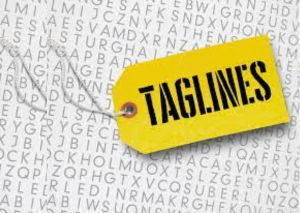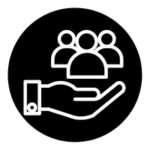BRANDING
Name Design
Crafting a successful brand hinges on Name Design—a pivotal facet in shaping perception and evoking emotions through carefully chosen words. Your brand name and tagline encapsulate your business's essence, imprinting a lasting impression in customers' minds. It's beyond mere catchiness; it's about forging an identity that mirrors your values, mission, and unique market proposition.
This process aligns words with your organization's ethos, establishing a distinct presence amid competition. A well-designed brand identity not only aids in recall but also fosters trust and loyalty. By resonating with your audience, it becomes a powerful tool for differentiation and propels business success.
In essence, Name Design goes beyond words; it forms the nucleus of your business identity, fostering recognition, trust, and a competitive edge in a bustling marketplace.

Logo Design
Crafting a compelling tagline or slogan is vital for encapsulating a brand's essence and benefits, fostering an emotional connection with consumers. Short yet impactful, these phrases, often paired with logos, aim to differentiate brands, leaving enduring impressions. A memorable tagline, relevant and expressive, distinguishes amidst competition, anchoring the brand's uniqueness in consumers' minds.
Package Design
Package design is a cornerstone of product marketing, shaping both the visual appeal and practical functionality of a product's packaging. It holds significant sway over consumer decisions, requiring a balance between attracting attention and providing vital product information and protection. The physical structure of a package, encompassing its shape, size, and materials, must safeguard the product while facilitating effortless access.
Moreover, colors, symbols, and typography are crucial elements in package design. Colors evoke emotions and influence perceived value—bright shades often signify excitement, while darker hues convey sophistication. Symbols, such as logos, communicate messages about the product or brand, while typography ensures readability and effectively conveys essential information. Ultimately, branding cultivates a distinct identity, setting a product apart from competitors and fostering a profound connection with consumers, profoundly impacting their purchasing choices.


Tagline
Logos and taglines stand as the pillars of a brand's identity. A logo isn't just an image; it embodies a brand's essence and values, serving as the foremost visual representation that customers encounter. Crafting a memorable logo demands simplicity and timelessness, crucial for conveying a brand's message effectively across various mediums. Simultaneously, taglines, succinct and powerful, play a pivotal role in advertising. They create brand awareness, forge emotional connections, and communicate a brand's core essence, fostering trust and differentiation in a competitive market. Together, logos and taglines wield immense influence, defining a brand's identity, values, and its relationship with consumers.
Logos and taglines serve as the cornerstone of brand identity. A logo encapsulates a brand's core, speaking volumes about its values and identity. Its design, marked by simplicity and timelessness, resonates across mediums to effectively convey the brand's essence. Meanwhile, taglines, concise yet impactful, play a crucial role in advertising. They elevate brand visibility, fostering emotional ties, and communicating a brand's essence, ultimately building trust and setting the brand apart in a crowded market. Both logos and taglines hold considerable sway, shaping a brand's identity, values, and connection with consumers
PRODUCT DESIGN
Product Design is the process of envisioning, creating, and repeating products that address specific requirements and solve the problems of the end-users in a given market. It involves a deep understanding of the user's needs and preferences, and the ability to translate them into tangible and functional products that are not only aesthetically pleasing but also meet the required performance standards.
Effective product design is a combination of design thinking, creativity, and engineering skills. The designer must be able to think beyond the obvious and come up with innovative solutions that meet the user's needs. The design process begins with research and analysis of the user's needs, followed by the conceptualization and development of the product. This process includes sketching, prototyping, testing, and refining the product until it meets the required standards.
The key to successful product design is the ability to balance form and function. A product must be visually appealing, but it must also meet the user's needs and perform as intended. It must be easy to use, ergonomic, durable, and efficient. It must also be cost-effective and easy to manufacture. The designer must be able to work closely with engineers and manufacturers to ensure that the product meets these requirements.
Product design is the art of creating solutions that meet the user's needs and preferences. It is a process that involves creativity, design thinking, and engineering skills. A successful product designer must be able to balance form and function and work closely with engineers and manufacturers to bring the product to life. By understanding the user's needs and continuously improving and updating products, businesses can stay ahead of the competition and achieve success in the market.

VISITING CARD, DIARY, & ENVELOPE
Visiting cards, diaries and envelopes are important tools for creating a unique brand identity. They are often the first point of contact for potential customers and can make a lasting impression. Therefore, it is crucial to put thought and effort into their design.
When designing a visiting card, it is important to keep in mind the overall image you want to project. The design should be simple and elegant, with clear, legible typography. The card should also include all necessary information, such as your name, title, and contact details. Additionally, it is a good idea to include a logo or other graphic element that represents your brand.
Diaries are also an important tool for creating a brand identity. They can be used for various purposes such as keeping track of appointments, meetings, and important dates. The design of the diary should be professional and consistent with your brand image. This can be achieved by using the same colors, typography, and graphics as on your visiting card.

Envelopes are often overlooked when it comes to branding, but they are an important part of creating a cohesive image. The design of the envelope should match that of your visiting card and diary. This includes using the same colors, typography, and graphics. It is also important to include all necessary information, such as the sender's and recipient's addresses.
These are essential elements in creating a unique brand identity. They are the first point of contact for potential customers, and it is crucial to put thought and effort into their design. By keeping the design simple, elegant, and consistent with your brand image, you can make a lasting impression on potential customers.
FAQ's
Branding involves developing and spreading the name, characteristics, and personality of a brand. It can be applied to a company’s overall identity or specific products, services, or ideas.
You need to follow some steps to Create Brand:
- Identifying your audience
- Research your competitors
- Define your brand’s purpose and position
- Develop a personality and brand voice
- Create your brand story
- Pick a brand name
- Write a slogan
- Design your brand look and logo
- Integrate your brand into your business
- Don’t be afraid to rebrand
Logos serve as a key point of identification, acting as symbols that customers use to associate with your brand. The ideal scenario is for people to quickly link your logo with the memory of what your company does and, more crucially, the emotions it evokes in them.
Packaging design is a vital process ensuring your packaging serves multiple functions. It must be functional, securely holding and facilitating the transport and storage of your product. Additionally, it should distinguish itself from competitors’ packaging and attract customers both in-store and online.
Types of Branding includes:
- Corporate Branding
- Personal Branding
- Product Branding
- Retail Branding
- Geographic Branding
- Service Branding
Your brand stands as one of the most crucial assets for your organization. It shapes your identity, making your business memorable and enticing consumers to choose you.
There are 4 Pillar of Promotions:
- Advertising
- Direct selling
- Sales promotion
- Public relations
Product design is the method of creating a practical product that addresses customers’ needs by understanding their problems and devising innovative solutions. This term is also employed to describe the outcome of this process—the design characteristics of an already-existing product.






